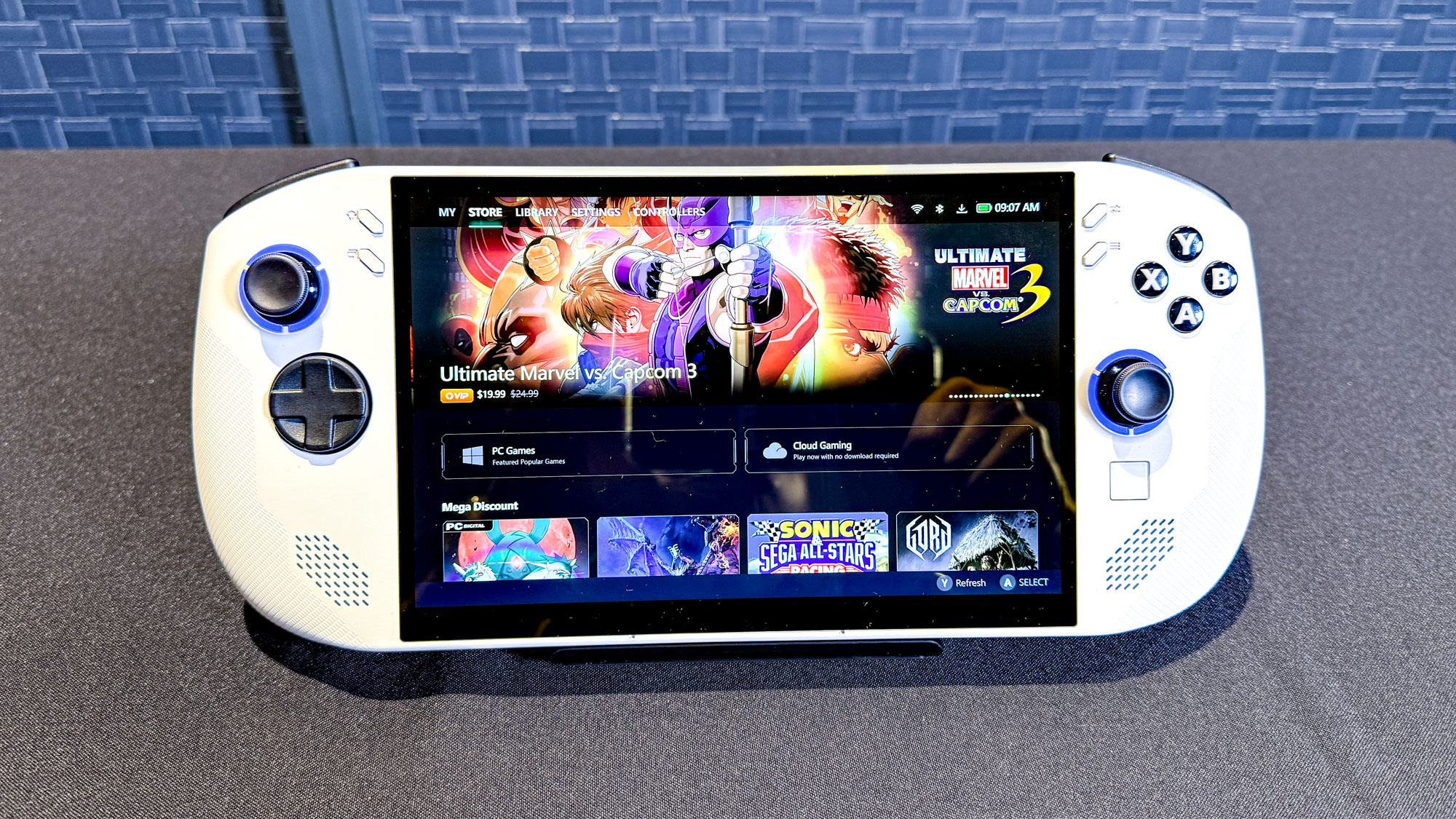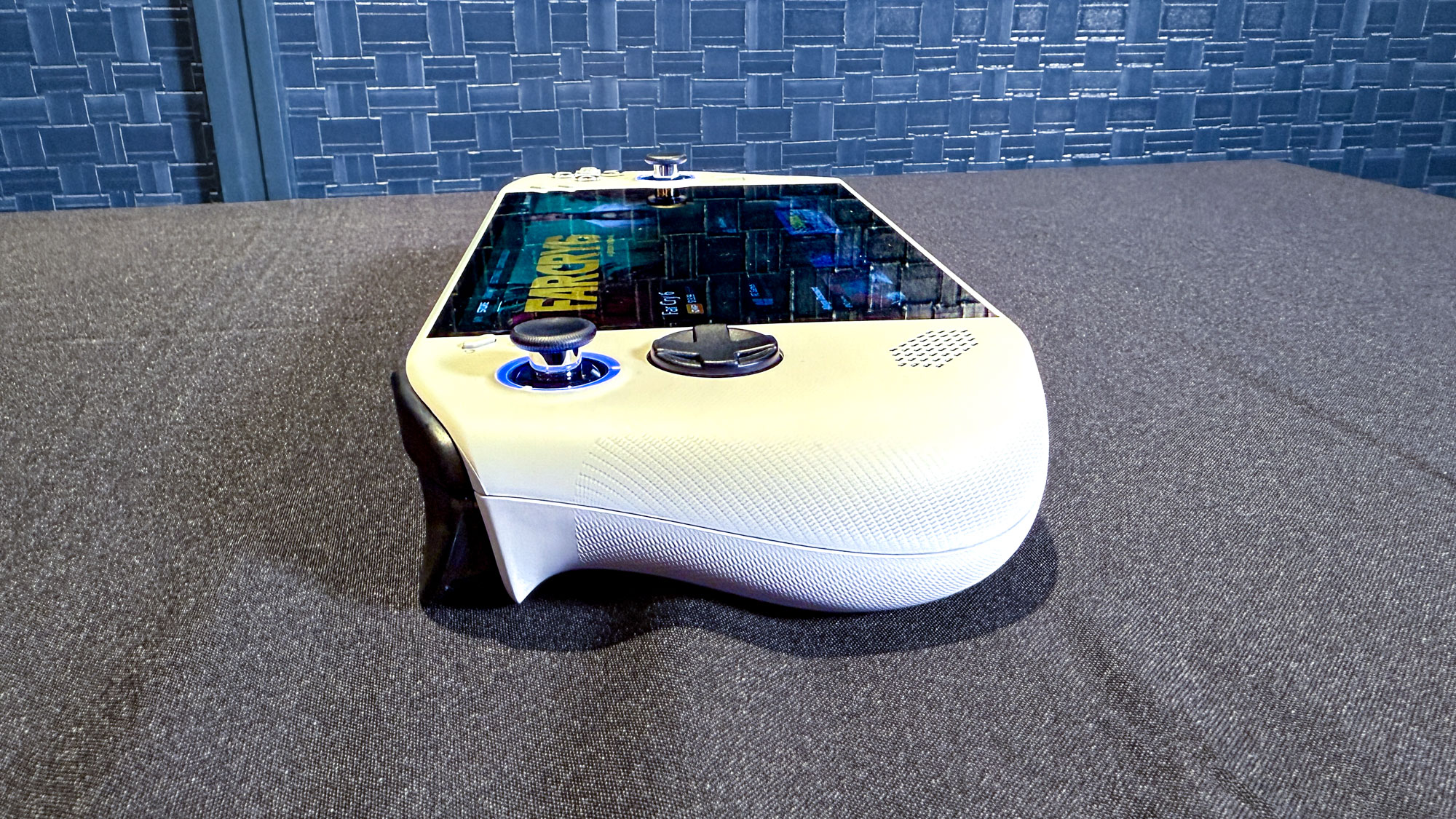
CES 2025 showed that we’re in for quite a year for gaming, with Nvidia announcing its new, AI-powered lineup of RTX 5000 series graphics cards, gaming laptops like the Razer Blade 16 packing serious power and, of course, a fresh slate of PC gaming handhelds.
And this year, the latter caught my attention the most.
Well, first, how could you not be entertained by a ridiculously large, 11-inch display on the Acer Nitro 11? Surprisingly, it’s still light to hold, and it will definitely be on our radar once it arrives later in 2025. However, the big elephant in the room is a gaming handheld I didn’t expect to be so impressed by: the Lenovo Legion Go S.
I’ve always been a fan of handheld gaming since the days of booting up my GameBoy or PSP and taking it virtually everywhere I went, but I’ve shunned current PC gaming handhelds. Despite the success of the Steam Deck OLED, it never “wowed” in terms of pure power.
So, surely an Asus ROG Ally X would do, right? Not really, seeing as it only runs Windows 11. I’m sorry Microsoft, but the operating system just wasn’t built for PC handhelds. And I wasn’t a fan when I tried it on a Lenovo Legion Go.
Now, though, the stars have aligned. The Legion Go S comes in a SteamOS option ($499(, and it’s even priced $100 less than its Windows model ($599) launching in February. Throw in its impressive components, including an AMD Ryzen Z1 Extreme or AMD Ryzen Z2 Go chip and 32GB of RAM, and you’ve got yourself the most anticipated handheld gaming PC of the year.
For me, now’s the time to get into PC gaming handhelds, and it’s all thanks to the Legion Go S — here’s why.
SteamOS conquers all
We heard plenty of leaks and an actual confirmation that SteamOS, Valve’s favored operating system for its Steam Deck, would arrive on other PC gaming handhelds. Now it’s finally happening with the Legion Go S.
This is a major step in the right direction, and possibly the start of a new era of handheld gaming beyond a Nintendo Switch 2, PS Portal or Xbox’s ways to stream Game Pass games on, well, a lot of devices. It means that upcoming handheld gaming PCs finally have a standard they can attain: offering SteamOS to play nearly any title in your Steam library that isn’t a pain to navigate around or is taxing on the system.
Just look what happened when we gave Windows 11 the boot and overlayed SteamOS on an Asus ROG Ally X. The results are staggering, to say the least, with 25% better performance and longer battery life just by using another operating system.
Valve was smart to give away its popular SteamOS to other manufacturers while it (probably) works on its Steam Deck 2. Soon, I predict SteamOS will become the default for PC gaming handhelds, and the Legion Go S is kicking it all off.
Sure, SteamOS has got me excited about the Legion Go S, but a fine-tuned operating system can only go so far, though.
Will the specs be good enough?
The Lenovo Legion Go S is arriving in multiple configurations throughout 2025. The Windows 11 model is set to arrive in January, with a starting price of $799. In May, another Windows-powered Legion Go S will arrive and will start at $599. But the one to really look for is the SteamOS Legion Go S launching in May, and it’s the most affordable of the lot at $499.
So, why more affordable? The Legion Go S will either come packed with an AMD Ryzen Z2 Go processor or AMD Ryzen Z1 Extreme, with the latter presumably reserved for the pricier models. Does this mean the SteamOS model will only feature an AMD Ryzen Z2 Go CPU (which seats between an AMD Ryzen Z1 and Ryzen Z1 Extreme in terms of performance)? We’ll find out more details soon, but either way, the Legion Go S has some beefy components.
Up to 32GB of RAM and 1TB for storage, along with two USB4 ports for speedy connectivity and a microSD slot for good measure? That’s better than some gaming laptops around the same price range.
Plus, we’ve seen it in action. Our own Tony Polanco talked about how games look bright and colorful on the 8-inch (1,920 X 1,200) 16:10 120Hz touch display in his Legion Go S hands-on review. While we still have more time with it, we have high hopes for its power and efficiency.
I’m a big fan of pushing systems to their limits, especially when they’re portable. I remember when Borderlands 2 — and a proper PC and console game when it launched — came to PS Vita, and I was amazed by how console-level gaming could be played anywhere. The Legion Go S keeps up that idea, and if it can easily play the likes of Black Myth: Wukong without constant stutters, it’s a win in my books.
A design that works

Does the Legion Go S look familiar? That’s because it shares a striking resemblance to the Asus ROG Ally X. That’s not a bad thing at all, in fact, its ergonomic design is far more comfortable and easier to hold than the previous Legion Go. It’s smaller at 11.77 x 5.02 x 0.88 inches, far lighter at 1.63 pounds, and above all else, simply feels good to hold — which will come in handy for those long gameplay sessions.
Sure, it’s bigger than the Steam Deck, but you’re also getting a bigger, 8-inch display in a lightweight device that’s easy to pop in your bag and take around anywhere (the Acer Nitro 11 will have problems with that).
It’s clear Lenovo has learned from its first take on a gaming handheld. The original Legion Go is a fine device but can feel clunky at times. Sure, its innovative Swith-like controllers that also act as a mouse for FPS titles is a fun idea, but it wasn’t the game-changer Lenovo hoped it would be. With the Go S, Lenovo thankfully went back to the basics and came up with a refined, and striking, design.
Outlook
The handheld gaming PC category has come a long way, and with the launch of the Lenovo Legion Go S, now’s my time to stop sleeping on them. With SteamOS onboard at a more eye-catching price tag, commendable specs even with the AMD Ryzen Z2 Go processor and a no-nonsense design that shouts “play me!” proudly, the Legion Go S will kick off the year strong for gaming — and I want in.
Yes, the MSI Claw 8 AI+ is already out and may pack a seemingly impressive Intel Core Ultra 7 Series 2 CPU packing an Intel Arc 140V GPU, while the big Acer Nitro 11 may boast a full-on AMD Ryzen 7 laptop processor, but they don’t have a key feature: SteamOS. That’s what makes the Legion Go S shine, making it somewhat of a successor to the Steam Deck.
We picked the Legion Go S as one of the best gadgets at CES, which says a lot about how much it impressed. Will it have stiff competition with the inevitable Nintendo Switch 2? Of course it will, but I for one have a forever-growing backlog of PC games in my Steam library, and I’ll get through quite a few of them on the go once my Legion Go S arrives. Speaking of, pre-orders are now live, but if you’re after a brilliant OS and a cheaper model, wait for the SteamOS version heading to shelves this May.







